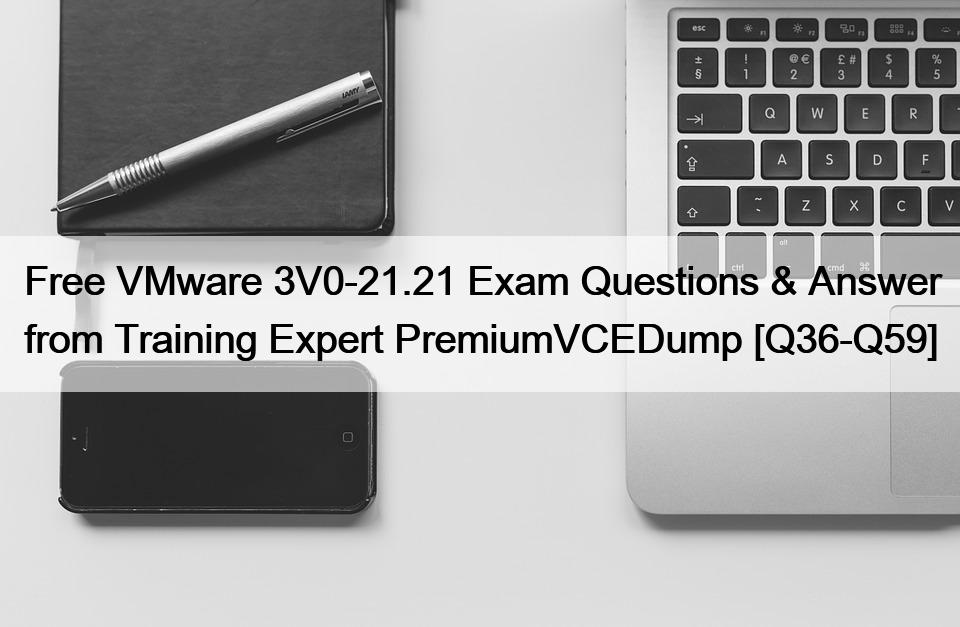Free VMware 3V0-21.21 Exam Questions & Answer from Training Expert PremiumVCEDump [Q36-Q59]
Free VMware 3V0-21.21 Exam Questions and Answer from Training Expert PremiumVCEDump
Top VMware 3V0-21.21 Courses Online
VMware 3V0-21.21 exam is a certification exam designed to test the advanced knowledge and skills of IT professionals in designing and implementing VMware vSphere 7.x solutions. 3V0-21.21 exam is intended for experienced VMware professionals who have an in-depth understanding of VMware vSphere 7.x and its associated technologies. Passing the 3V0-21.21 exam is a requirement for obtaining the VMware Certified Advanced Professional (VCAP) certification.
VMware 3V0-21.21 certification exam covers a wide range of topics, including designing and deploying vSphere 7.x infrastructure, designing and implementing vSphere 7.x storage solutions, designing and managing vSphere 7.x networking, and designing and deploying vSphere 7.x security solutions. 3V0-21.21 exam also covers the integration of vSphere 7.x with other VMware products and solutions.
New (2023) VMware 3V0-21.21 Exam Dumps: https://www.premiumvcedump.com/VMware/valid-3V0-21.21-premium-vce-exam-dumps.html
